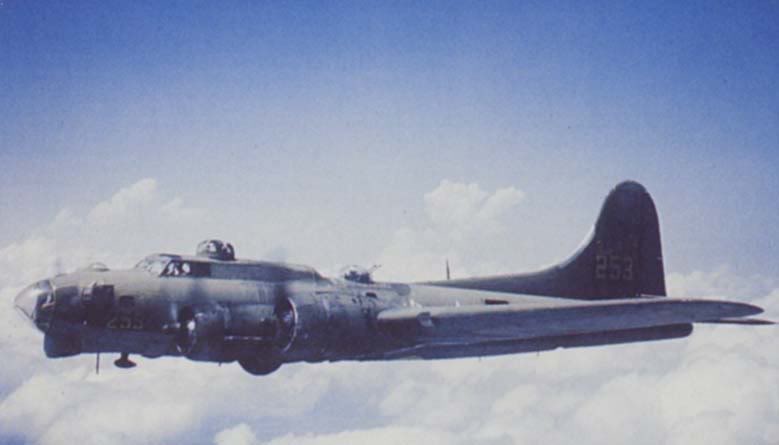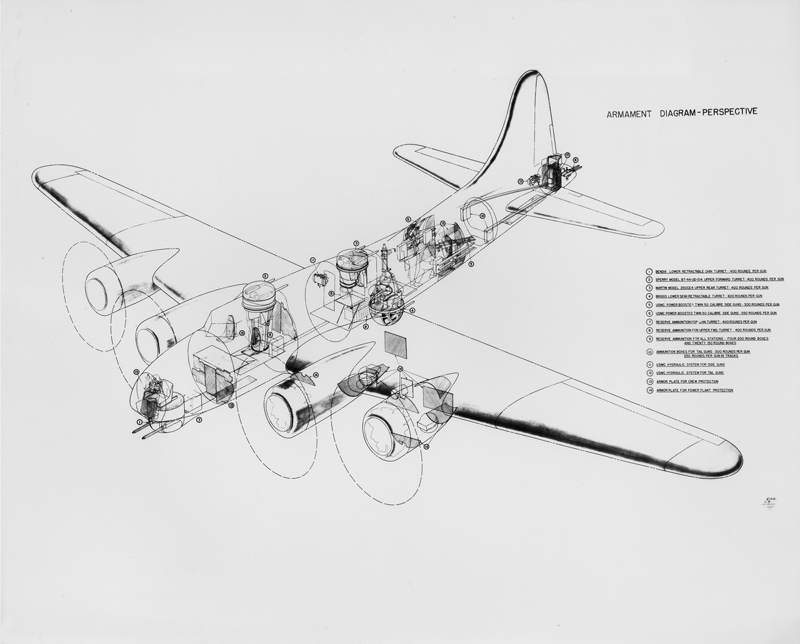When compared to a B-17F’s 3,900 rounds of ammunition, the YB-40 could carry nearly triple that amount—11,200 rounds
Before long-range fighters like the P-51D were available, the bombers of the 8th Air Force suffered terribly at the hands of the German fighters during the early years of the Allied Combined Bomber offensive in Europe. The US Army Air Forces (AAF) developed plans to equip bombers with increased defensive armament as a result of those losses. The modified bombers would accompany standard bomber formations and offer protection from the approaching German fighters on the way to the objective and return, according to Jim O’Connell, 92nd Air Refueling Wing Historian, in the article Boeing YB-40 Flying Fortress. The Boeing YB-40 “gun-ships” were only flown in battle by the 92nd Bombardment Group.

The second production B-17F was modified by Vega Aircraft Corporation under a contract with the AAF in August 1942 to become the first XB-40 (‘X’ for experimental) gunship, which was later renamed the YB-40 (‘Y’ for service test) gunship. The AAF initially ordered thirteen YB-40s. More armor plating was added to protect the various crew positions, and the bomb bay was modified to become a magazine for ammo.
When compared to a B-17F’s 3,900 rounds of ammunition, the YB-40 could carry nearly triple that amount—11,200 rounds. Other changes included installing a second manned dorsal turret in the location of the original radio compartment, replacing the single .50 caliber waist gun with two staggered, twin-mounted emplacements, and adding a chin turret with two.50 caliber light-barrel machine guns. In comparison to the ordinary B-17F’s 13 guns, the YB-40 had 18 or more.

In order to conduct operational tests, 12 YB-40s were added to the 327th Bombardment Squadron, 92nd Bombardment Group at Royal Air Force Base Alconbury in May 1943. The thirteenth plane ran out of fuel and came down on an island not far from Scotland. The YB-40s launched their first operational mission on May 29, 1943, attacking the Saint-Nazaire submarine pens and locks. The leadership soon learned that the YB-40s couldn’t keep up with the B-17s, particularly on the flight back from the objective after the formation dropped its bombs. When they fell behind, the YB-40s started to burden rather than aid the formation. Compared to a regular, fully-armed B-17, the YB-40s weighed close to 4,000 pounds more.
The additional gun stations also resulted in a much greater aerodynamic drag for the YB-40. Comparatively, although the YB-40 needed 48 minutes to reach the same height as the B-17F, it only took 25 minutes for the B-17F to do it. The YB-40s were taken out of service in August 1943 after taking part in just ten missions. A few months later, the first long-range fighter escorts with the P-51B and later P-51D Mustang began operations in Europe and eventually neutralized German fighters.
The YB-40 idea was a failure because the aircraft was too heavy and slow, but the 92nd Bombardment Group crews were able to learn some important lessons from the YB-40s’ operational testing. These lessons resulted in noticeable changes to the B-17G, the final production version of the B-17 bomber, as well as to the B-17Fs that were produced later. These B-17s included the chin turret, offset waist gun stations that provided more movement, and an enhanced tail gunner station with significantly larger windows. The B-17F and B-17G aircraft of later manufacturing were therefore better able to defend themselves.

Photo by U.S. Air Force

